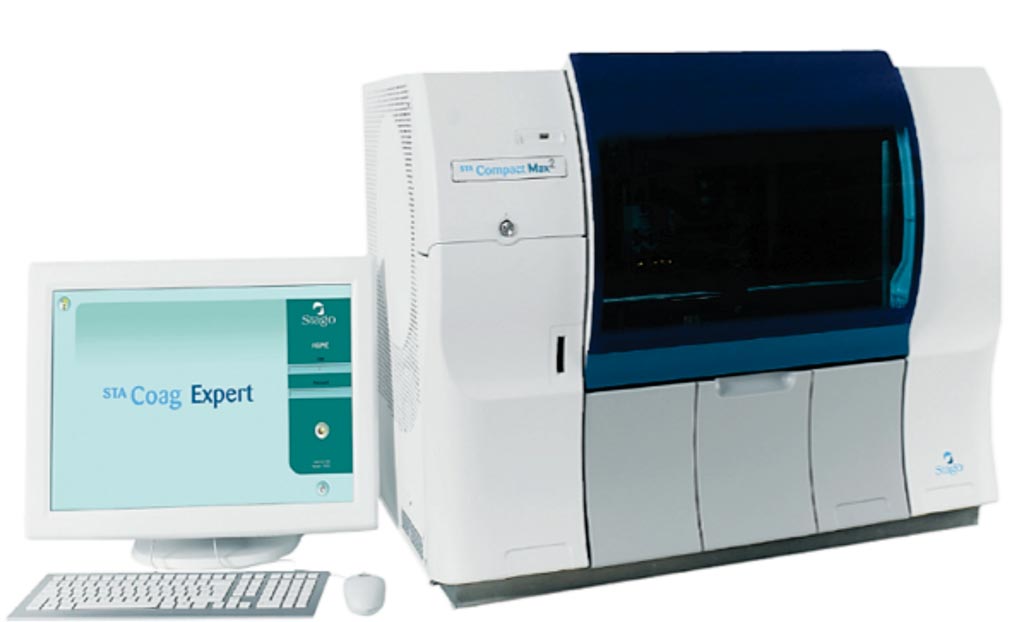Coagulation Tests Affected by Sodium Citrate Concentration
By LabMedica International staff writers
Posted on 28 Aug 2018
Despite a high degree of standardization, coagulation tests largely depend on preanalytic factors. Apart from artifacts acquired during blood drawing and transportation, the in vitro anticoagulant used has a potential impact on the coagulation test result.Posted on 28 Aug 2018
Usually, a 9:1 blood to sodium citrate ratio is used with a buffer range between 3.2% and 3.8%.The 3.2% buffered sodium citrate binds less assay-added calcium than 3.8% buffered sodium citrate, therefore clotting times tend to be shorter in 3.2% than 3.8% buffered sodium citrate. Although there are no exact data available, today 3.2% buffered citrate is widely used.

Image: The STA COMPACT MAX 2 is a fully automated benchtop analyzer (Photo courtesy of Diagnostica Stago).
Medical Laboratory Scientists at the Medical University of Vienna (Vienna, Austria) carried out a prospective observational study with 76 volunteers, differences related to the citrate concentration were evaluated. For both buffer concentrations, reference range intervals were established. Using the same calibration settings, 3.2% and 3.8% buffered citrate samples were consecutively analyzed. The reagent-analyzer combinations were chosen with respect to measurement accuracy and validity, assays' robustness and practicability during the parameters' introduction phase at their laboratory.
The activated partial thromboplastin time lupus-sensitive reagent (aPTT-LA) for lupus anticoagulant (LAC) confirmation testing was analyzed by using plasma with and without a reagent containing phosphatidylethanolamine. Lupus anticoagulant confirmation testing was considered positive when the difference between both aPTT-LA clotting times was greater than eight seconds or the ratio between the neat diluted Russell viper venom time (dRVVT) and the dRVVTConfirm (dRVVTRatio, Staclot DRVV Screen/Staclot DRVV Confirm) was greater than 1.25.
The team found that most parameters evaluated presented good comparability between citrated samples taken with 3.2% and 3.8% trisodium buffer. The ellagic acid containing activated partial thromboplastin time reagent (aPTT-FS) indicated a systemic and proportional difference between both buffer concentrations, leading to an alteration in its reference ranges. Further, a confirmation test for lupus anticoagulant assessment (Staclot LA) showed only a moderate correlation with a proportional deviation between both citrate concentrations. Further, a statistically significant difference was found in the diluted Russell viper venom time confirmation testing, coagulation factors V and VIII, and the protein C activity, which was found to be of minor clinical relevance.
The authors concluded that the alteration of 3.2% and 3.8% buffered sodium citrate on specialized coagulation tests in their setting was of limited relevance. As an exception, the aPTT-FS and aPTT-LADifference were significantly affected by the citrate concentration used. These findings demonstrate the comparability of data assessed with these citrate concentration ranges. The study was published in the August 2018 issue of the journal Archives of Pathology & Laboratory Medicine.
Related Links:
Medical University of Vienna









 Analyzer.jpg)



